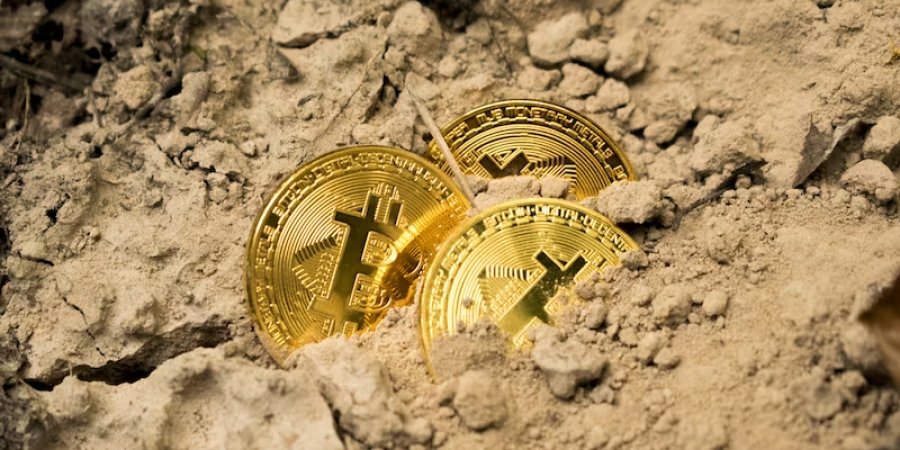The Green Side of Bitcoin: Innovations in Energy-Efficient Cryptocurrency Mining

Bitcoin mining has developed a reputation as an energy-guzzling, environmentally hazardous practice due to the vast computations required by the proof-of-work consensus mechanism. But concerns over sustainability have sparked promising innovations in energy-efficient cryptocurrency mining. By exploring greener power sources, optimizing data centers, and upgrading to more efficient hardware, the industry is charting a more sustainable path forward.
Transitioning to Renewable Energy Sources to Slash Emissions
One of the most impactful steps miners can take is procuring energy from renewable sources like solar, wind, hydropower and geothermal instead of fossil fuels. This immediately reduces greenhouse gas emissions and aligns with global sustainability initiatives to combat climate change. Hydroelectric-rich regions of China, Iceland, and Canada are primed to supply miners with abundant carbon-neutral energy from rivers and dams. Already, several major mining operations are leading the renewable energy charge. MintGreen's mining facility in Canada uses hydroelectric power exclusively to tap into the region's extensive hydro resources. Iris Energy's large data center in Mongolia runs fully on wind and solar energy, taking advantage of the country's investments in green power. And in west Texas, densified solar power from vast solar arrays fuels blockchain mining operations seeking cheap renewable energy. A continued industry-wide shift at scale to renewables would dramatically improve mining’s environmental profile by slashing carbon emissions from power generation.
Optimizing Data Center Design for Maximum Efficiency
In addition to renewables transition, careful data center design and location also boosts mining efficiency. Facilities can be situated in cool northern climates to minimize demands for energy-intensive air conditioning to prevent miners from overheating. Building mining farm structures partially underground can leverage natural geothermal cooling effects of soil to reduce cooling costs. Efficient cooling systems, optimized ventilation and hot aisle containment layouts in data centers prevent wasted energy from leaking heat or recirculating hot exhaust air. Co-locating mining rigs directly within hydroelectric dams, nuclear plants or other facilities with excess power capacity cuts electricity costs by eliminating transmission losses. With smart data center management and location selection, less energy goes towards overhead cooling and ventilation and more energy can be directed into productive cryptocurrency mining.
Upgrading to Cutting-Edge ASIC Hardware and Chips
Specialized ASIC mining rigs packed with customized chips are essential for profitable Bitcoin mining today, but newer generations of ASICs are vastly more efficient at generating hashes per watt consumed. Bitmain’s latest Antminer S19 Pro has an astonishing hashrate of 110 TH/s while consuming only 3,250 Watts of electricity. By comparison, the S9 model from 2014 has a hashrate of only 14 TH/s while gulping 1,300 Watts. Upgrading frequently to the most advanced ASIC models maximizes the number of hashes performed per unit of electricity consumed. Older mining units like the S9 waste over 50 times more power for the same hashrate as latest models. With ASIC hardware improving rapidly year-over-year in terms of efficiency, miners that fail to continually upgrade to new rigs operate far less efficiently and sustainably than necessary.
Repurposing Waste Heat to Improve Sustainability
Bitcoin mining generates tremendous amounts of waste heat from concentrates of power-hungry specialized ASICs churning away in data centers. Innovative solutions now capture and reuse this thermal energy for beneficial purposes like heating homes, warming greenhouses for food production, or even de-icing winter roads. Some mining facilities immerse racks of rigs in sealed mineral oil reservoirs with integrated heat exchangers to harness waste heat energy. This reduces electricity needed for conventional cooling methods and improves sustainability. With enough excess heat generation, Bitcoin mining could potentially power full district heating systems for communities located near mining farms, reducing dependence on fossil fuels.
Building an Industry-Wide Culture of Sustainability
Transitioning to a predominantly green, efficient cryptocurrency mining industry requires commitment and initiative at all levels. Groups like the Bitcoin Mining Council bringing together major mining companies are helping set standards and give guidance to miners on improving sustainability practices. Consumers may be willing to pay a premium for verifiably green Bitcoin mined sustainably, providing funds that could offset miners’ costs of energy transition. Ultimately, wasteful mining practices relying on dirty coal power and outdated rigs should become unacceptable industry-wide. Thoughtful government regulation and interventions may be warranted if miners fail to take adequate voluntary steps and self-regulate. But with proactive initiative, Bitcoin mining can slash emissions dramatically while remaining highly profitable. The digital gold rush need not denude the planet. Green innovations around renewables, hardware upgrades, waste recycling and optimized data centers can align cryptocurrency mining with environmental stewardship.
Previous Posts:
Next Posts: